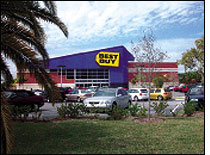Apr 01, 2006A big unknown when companies introduce a new technology is how individual employees will react to it. When the U.S. Department of Defense started using active (battery-powered) radio frequency identification tags on containers, some people thought they might be valuable, so they stole them. Others thought they were going to be used to monitor workers, so they destroyed them.
Retailers are having more success. Anecdotal evidence suggests store associates love RFID. Instead of walking around a store to figure out what's missing from shelves, sales associates use a handheld interrogator to quickly read tags on jeans and other items. "It turns out they now take inventory more often," says Jeff Richards, vice president of intelligent supply chain services at VeriSign, who has worked with a number of retailers on item-level pilots in stores. "Even without being asked, they just do it because it's fast, accurate and easy."
Best Buy's employees also embraced RFID. The retailer did an in-store trial of smart shelves that tracked computer game inventory (see RFID Gets Item-ized). Store associates were able to print out a report showing what items needed to be replenished. "With RFID, it was so accurate and easy," says Paul Freeman, Best Buy's RFID program director. "They would just go to the workstation on the selling floor and request a replenishment report. They got into a rhythm."
Freeman says that Best Buy, which plans further testing of the technology, could prompt associates to replenish when items are out of stock by automatically generating reports at set intervals or sending a message to an associate's PDA. But for now, he's comfortable letting people do it when they feel replenishment is necessary. "When you make it easy," he says, "people are happy to do their job."

